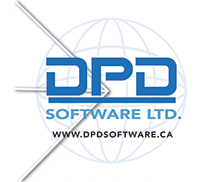![]() HISTORY
HISTORY
Prior to Digital Transformation (DT), organizations used a technique called Business Process (Re-) Engineering (BPR) to affect improvements to existing business process models. Business process re-engineering requires the organization to map processes within silos of the organization and work to find ways to improve the efficiency of these processes within each silo. Often communication between silos was not encouraged or kept to a minimum. Observations on the implementations using the old model revealed that decisions on efficiency within one silo, could have a negative impact on efficiency in other silos. It became clear that one should not assume efficiency decisions within a silo would not impact efficiencies in other areas of the organization.
With the raise of digital tools throughout industry and recognizing efficiency of processes is impacted by everything within your environment; the concept of Digital Transformation was born.
DIGITAL TRANSFORMATION
At the core of digital transformation is the constant struggle businesses face as they work to increase profitability. On the surface this comes down to the two techniques that have traditionally driven “process improvement”, cut costs and/or increase income. At the basic level, cost cuts can be found throughout a business,. Although it seems intuitive, digital transformation will tell you, do not consider cost savings as a goal.
Improving income involves increasing sales volumes, prices or expanding product lines. Digital Transformation is using well defined and designed strategies to achieve your goals. Cost savings implies you are cutting costs where you "think" it will not impact your values. Automating your business from a cost perspective, has been proved to bring little value.
Review each section for a short step by step explanation of what you can expect when you engage DPD Software for your DT implementations. This is not meant to explain the entire process. It is here to give you an idea of what you are about to get into.
Whether you come to us with your goals well defined or you just have ideas that need to be formalized. We start your plan with understanding your goals and that may imply working to establish them if you are not ready.
 The next step is about understanding your business processes as they are today. This means getting in on the ground and seeing for ourselves. With your goals documented and your existing business processes also understood, we can now work to understand the “technology gap” between where you are and where you wish to go.
The next step is about understanding your business processes as they are today. This means getting in on the ground and seeing for ourselves. With your goals documented and your existing business processes also understood, we can now work to understand the “technology gap” between where you are and where you wish to go.
DPD software’s consultants can potentially work remotely, question mangers and get a good picture of what you are doing, it does cut costs. Our experience has shown that at this stage, it is best to get the most accurate picture possible. If we do not start with the best understanding of your position, your “technology gap” will not be defined properly and that will potentially lead to you getting less than you need.
Our team measures success by your success and we know, understanding challenges faced in the trenches, means getting into the trenches and working alongside your team.
Sometimes you may be replacing the software infrastructure your organization currently uses; sometimes, you may have to update the tools currently installed; and other times you may start using features of the current tool that were not used before. It is critical to understand that digital transformation does not mean purchasing new software to run your business.
Once you can see your technology gap, it is now possible to understand what your organization should do to close the gap between your “today” and your “tomorrow”. From here we can identify digital transforming tools and techniques that will transform your existing business processes to achieve your goals.
At DPD, we define digital transformation as the adoption of digital transforming technologies to address the needs identified by your goals, throughout your business, effectively.
After this stage, your project is on a solid footing with a properly defined plan. At this stage, you know where you are coming from and where we need to take you. You are ready to go to the next step.
Implementation services can span a range of consulting and programing services. Project management is critical whether your software team is DPD Software itself, or a third party. Some professionals would like you to think your project manager should have intimidate knowledge of the software application selected. We will argue here that this false.
Implementing software needs at minimum a three-pronged team of “professionals”. First and foremost, a team of people who know how your business works and what it needs to get done in order to achieve its goals (this is your organization’s team). Next, we need folks who are proficient in the software solution you selected. You selected your vendor because by now, they have proved that they are professionals at the software you selected After you commit to software you will use, your solution team does not become the enemy. It the opposite, you will want to develop a long lasting relationship with them.
So, why a project manager? Who translates the business needs into implementation instructions for a software solutions deployment team and back to English for your team? Who will detect when either team is over stepping. This person is there to work between your two teams and keeping each team “honest”. Your team can get too “needy”, your vendor could get tempted to run a bit outside their promises. Your project manger keeps the balance in line so no one gets an unfair deal. Remember, when the project manager is gone, your team will depend on the vendor’s team for a long and prosperous relationship.
You are ready for a successful implementation.
Training is key. In the SME market we see many organizations that try to circumvent this stage. Either peer back services, work on a “train one and we will train the rest” or in really bad cases, go it alone and hope support contracts will be sufficient to train your team.
Remember, this will be a rough time for your team. No matter how bad the old software is, no matter how cumbersome the old system is, no matter how outdated the old software is compared to what you now have, your team is use to that interface. Your team has learned over time to quickly get records into the system and get the desired result out.
On new system, even when well-trained, it will take a month to settle into the business. Your people will be naturally faster on the old system than on the new system and stresses like not being properly supported with training will lead to frustration. Using support services to learn the system, while I have an order I need to get out, will not work. It becomes really easy to convince yourself to, “Forget it, I will put this through the old system and do this with a simpler order next time.”. This typically leads to discouragement and a failed deployments due to failed adoption by your team. DPD will discourage you from skipping this step.
Properly trained and supported. You are ready to go live.
Once you are up and running, you are not out of the woods yet. Your first month after “Go Live” will be critical. Our team works with your organization, and your selected software vendor to understand the roles we all must play as we support the organization going forward. When DPD Software is the supplier of the software deployed, our support teams are aware of a client in “Go Live mode” (our in-house term for a new customer on a new platform and in the first 30 days of use), and it is all hands on deck when any member of your team calls in.
We understand that in the first 30 days of a new deployment your team will get “nervous”; “go blank” at times; forget tricks they practiced or just need that extra “push” to move on forward. Your team sometimes just needs a quick “nod”, so they know that they are doing things right. We are there for you and your team, and we will work with your software vendor to ensure they are present as well. Keeping your team moving along during this “first time riding with no one holding the bike” is a make-or-break time for your team’s smooth adoption of your new systems. Yes, failed deployments have been attributed to training stages. So, we are watching to make sure no one falls off and refuses to get back up and keep trying.
Your digital transformation is now up and running and you have had a successful deployment. Now it is time to maintain. Remember digital transformation is not a “set it and forget it” adoption. Technology is changing with your business and reviews of your results will dictate tweaks and possibly new adoptions as your organization continues to grow. This is your new “normal”.
You have now completed a successful digital transformation.
